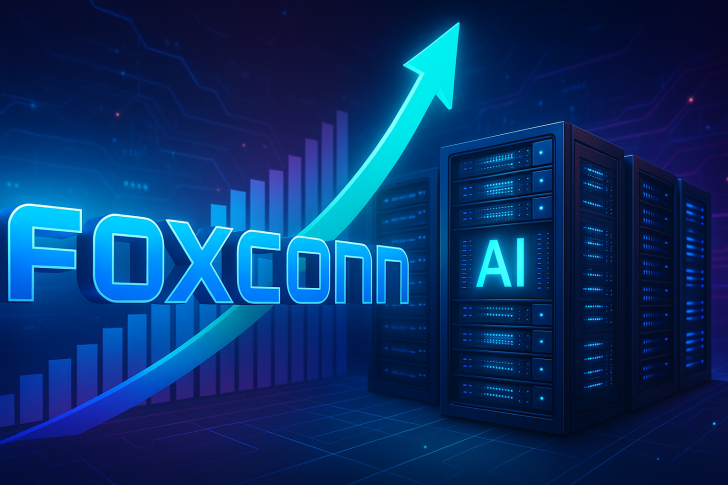⬤ Foxconn is preparing to pump between $1 billion and $5 billion into expanding its US manufacturing facilities as demand for AI servers continues to skyrocket. The company told Bloomberg it's targeting production of up to 2,000 server racks weekly by 2026—nearly twice what it's churning out now. The massive scale-up is being driven by growing orders from major clients like Nvidia and OpenAI, who are racing to build out AI infrastructure across North America.

⬤ The Taiwan-based manufacturer has seen a sharp uptick in demand for AI-focused production as tech companies scramble to secure the high-performance server systems needed to train and run large AI models. Nvidia is one of Foxconn's biggest partners, with the manufacturer playing a crucial role in assembling systems packed with advanced GPU setups. Foxconn is also working with OpenAI on the Stargate project, a major effort to build next-generation AI computing capacity. The planned US expansion will help the company meet these commitments by significantly boosting local production capabilities.
⬤ Part of Foxconn's strategy involves expanding US-based AI data center manufacturing to reduce tariff exposure and supply chain risks. By moving more assembly operations stateside, the company aims to create a more stable and flexible supply chain for AI server infrastructure. The jump to 2,000 racks per week in 2026 shows just how fast demand is accelerating, and Foxconn's expansion underscores its critical role in supplying AI hardware to tech giants like Nvidia and OpenAI. The push for domestic manufacturing comes as the AI sector pours billions into compute facilities throughout North America.
⬤ The investment highlights how AI computing growth is reshaping global manufacturing and driving massive capital flows into advanced infrastructure. By strengthening its US presence, Foxconn is positioning itself at the heart of a rapidly growing sector that depends on reliable production of high-performance servers. As AI deployment accelerates, the move shows how leading manufacturers are adapting to meet surging hardware demand in a changing geopolitical and economic environment.
 Eseandre Mordi
Eseandre Mordi

 Eseandre Mordi
Eseandre Mordi


